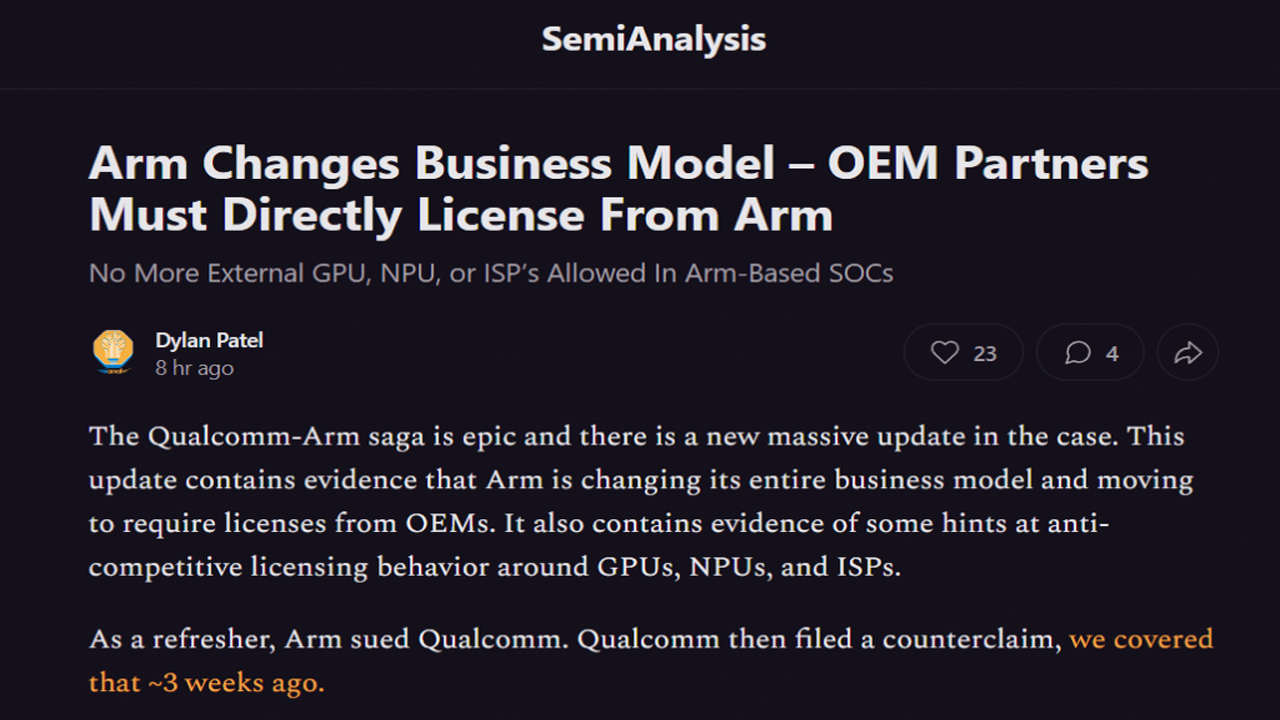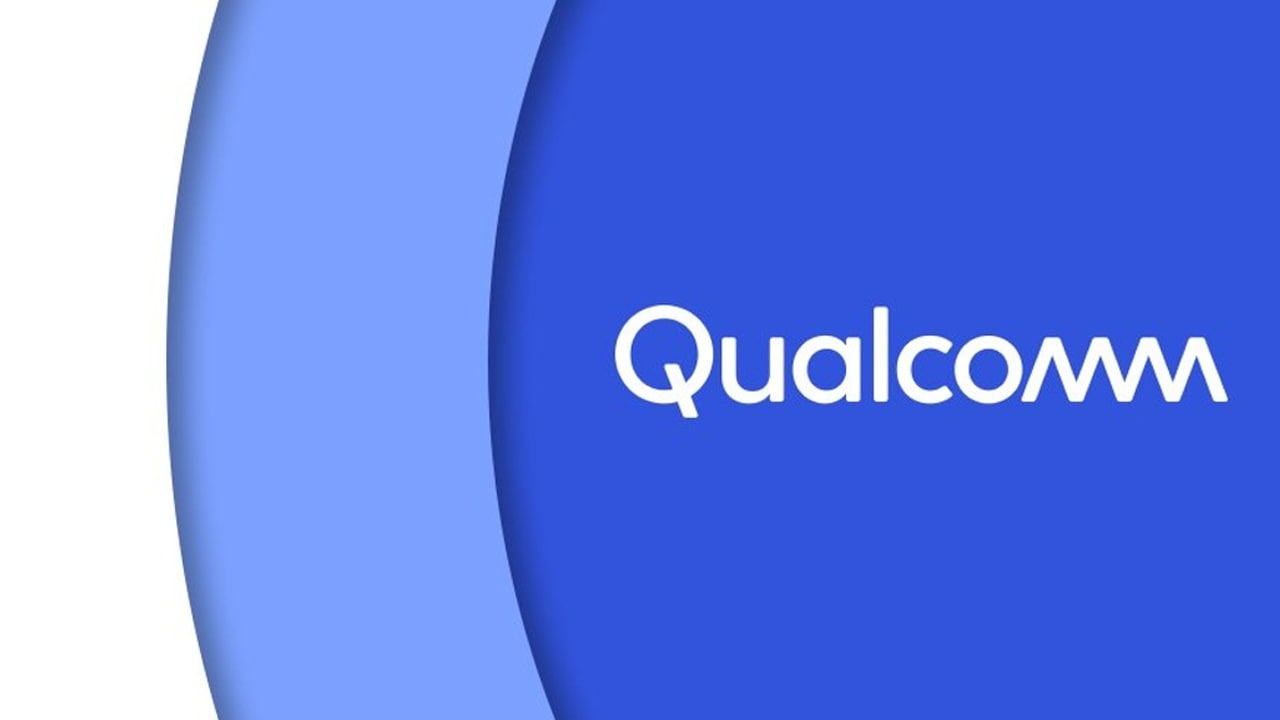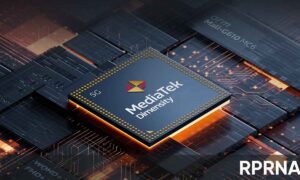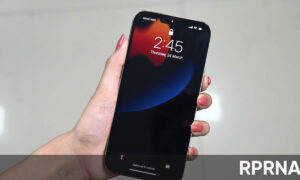According to Dylan Patel, an analyst at SemiAnalysis, a semiconductor industry analysis agency, according to Qualcomm’s counter-sued Arm’s documents, after 2024, the use of external GPUs and NPUs in SOCs based on Arm’s public CPUs is no longer allowed.
After 2024, Arm will no longer license its CPUs to semiconductor companies such as Qualcomm under a Technology License Agreement (TLA), according to the updated Qualcomm counterclaim. Instead, Arm will only license it to device manufacturers.
Join us on Telegram
Arm allegedly told OEMs that the only way to get Arm-based chips was to accept Arm’s new licensing terms. Qualcomm alleges that Arm lied to Qualcomm’s OEM partners about Qualcomm’s licensing terms.
In addition, Qualcomm claims that Arm told OEMs that semiconductor manufacturers will not be able to provide other parts of Arm-based SOCs and that the GPU, NPU, ISP, etc. will be directly provided by Arm’s new license.
That is to say, if you want to use the Arm public version of the CPU starting in 2025, the current Qualcomm Adreno GPU, Samsung, and AMD’s RDNA GPU, as well as independent NPUs and ISPs, must be abandoned and use the Arm public version.:
 Moreover, Arm mainly designs instruction sets for modern chips, and customers include Qualcomm, Apple, and Samsung, whose chips are all based on the Arm architecture.
Moreover, Arm mainly designs instruction sets for modern chips, and customers include Qualcomm, Apple, and Samsung, whose chips are all based on the Arm architecture.
In terms of business model, Arm licenses the instruction set to these companies and collects royalties from these companies. With Arm’s architecture, these companies can produce a variety of custom chips based on their needs.
Yesterday, Qualcomm countersued Arm, claiming that Arm had no legal basis for previously accusing Qualcomm of violating licensing agreements and trademarks.
At the center of the debate between the two sides is the licensing of chip designs between Arm and Nuvia, with Qualcomm intending to buy chip startup Nuvia for $1.4 billion.
Last month, ARM launched a lawsuit against Qualcomm and Nuvia, accusing the two companies of violating their licensing agreements with ARM.











